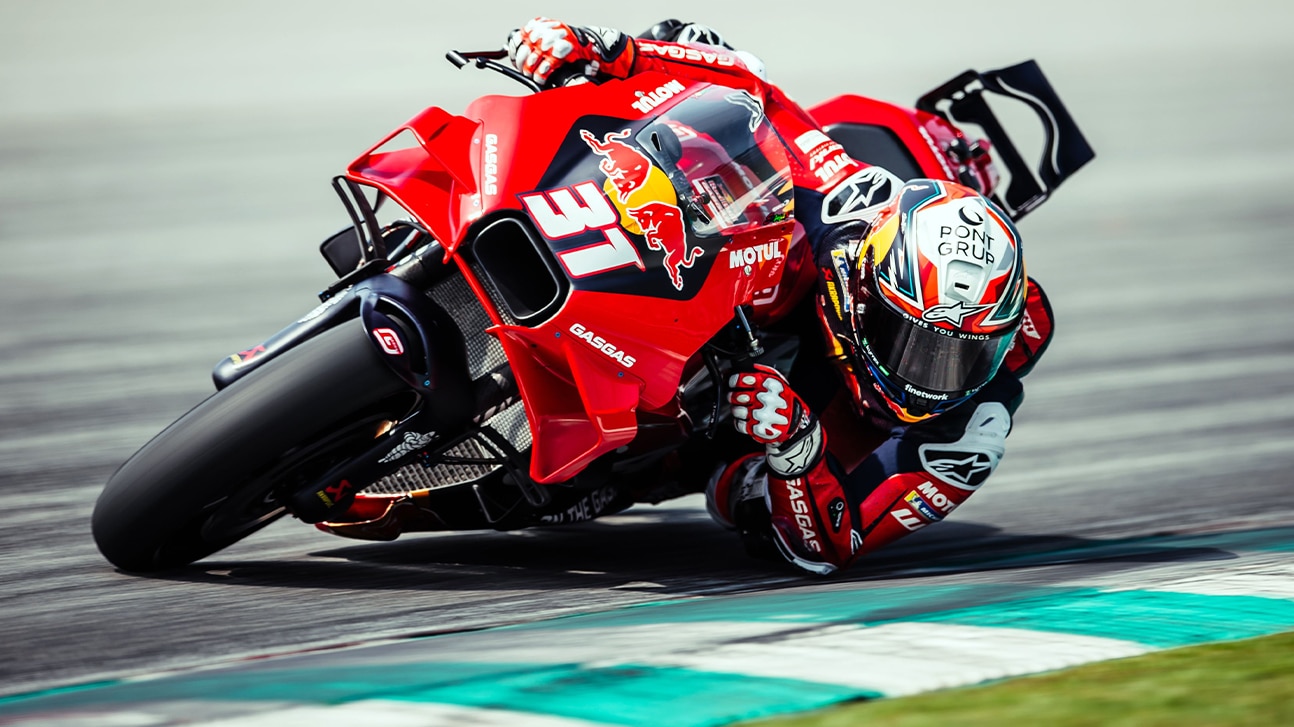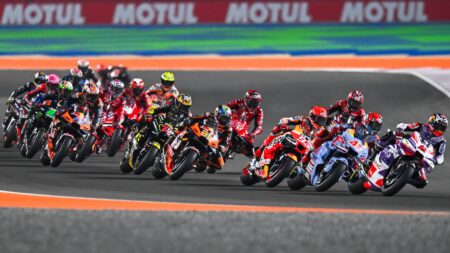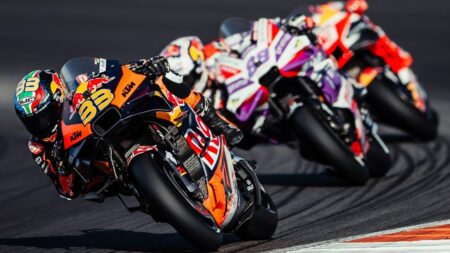Acosta’s aim, of course, is to conquer that same mountain that only three riders have managed in more than three quarters of a century of motorcycle grand prix racing. Phil Read, Valentino Rossi and Marc Márquez are the only men who have won the 125cc/Moto3, 250cc/Moto2 and 500cc/MotoGP world championships.
That is motorcycle racing’s real pantheon – entry only available to the best of the best of the best.
Many riders can win Moto3 races, a lot of riders can win Moto2 races but only a select few get to climb to the top of a MotoGP podium.
Indeed, the racetracks of the world are littered with shattered glass fibre left by riders who risked life and limb trying to scramble up that precipitous climb.
Not one of the last five Moto3 world champions has won a MotoGP race and only one of the last five Moto2 world champions has topped a MotoGP grand-prix podium. In other words, they got punched in the mouth and didn’t like it.

“The swagger of someone who knows where he’s going and is really enjoying getting there’
Red Bull
No one knows for sure, but Pedro Acosta seems ready for that punch and he will keep on going – a bit bloody, perhaps, but very much unbowed.
The Acosta hype has swirled around the paddock and beyond since the 16-year-won the 2021 Doha Moto3 grand prix after starting from the pitlane (following a QP infraction). Halfway through the race he was 11th but he won it anyway.
“I could see the leaders getting closer, so I thought, OK, this is the day we have to risk it,” he says. “If I crash, OK, that’s life, but if I win, I become a hero.” And a hero he became.
Acosta says his biggest strength is “big balls!” and he’s not lying. Yamaha test rider Cal Crutchlow followed him when it was raining during the Sepang shakedown test, his first MotoGP outing in the wet, and Crutchlow said, “F**k, he’s got some balls.”
“We are coming, we are on the way, we are getting better”
Of course, Acosta has got a lot more than that, because bravery alone won’t take you very far in motorcycle racing (rather usually to hospital). He has huge natural talent, impressive intelligence, big determination and the swagger of someone who knows where he’s going and is really enjoying getting there.
His maturity and coolness under fire – both on track and from the pack of journos chasing his every word – are mind-boggling. Talking to the 19-year-old is like talking to a 35-year-old. This is something that’s said about all the greats – they seem older than their years and they are effortlessly on top of everything. Because that’s the kind of brain you need if you earn your living at 220mph – you need massive bandwidth that copes with a thousand different things going on, all while you are riding on the edge of the precipice.
Acosta ended the Sepang tests ninth-quickest, six tenths off leader and world champion Pecco Bagnaia and more than a second inside the lap record. He was also the second fastest KTM/GASGAS rider, just four-hundredths slower than Brad Binder, KTM’s number one pretty much since he arrived in MotoGP.

KTM rate Acosta so highly that he was already testing new parts for the factory at Sepang
GASGAS Tech3
And he didn’t crash once during the three days, suggesting he had everything under control (okay, he did slide off once in the shakedown). Because testing shouldn’t be all about risking everything in time attacks to make yourself feel better when you read the timesheets, it’s about learning to prepare for every eventuality you will face during weekends and in races, like riding with worn tyres.
“If you push more with worn tyres it doesn’t mean you will be faster,” he said. “If you are aggressive, the anti-wheelie comes, the TC comes, the bike starts to shake, it becomes much more difficult to ride, so you become slower because you spend more energy fighting the bike. You need to understand that you must ride more with your head than your heart.
“We are coming, we are on the way, we are getting better.”



